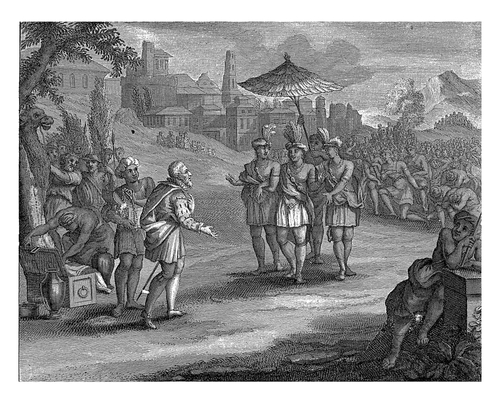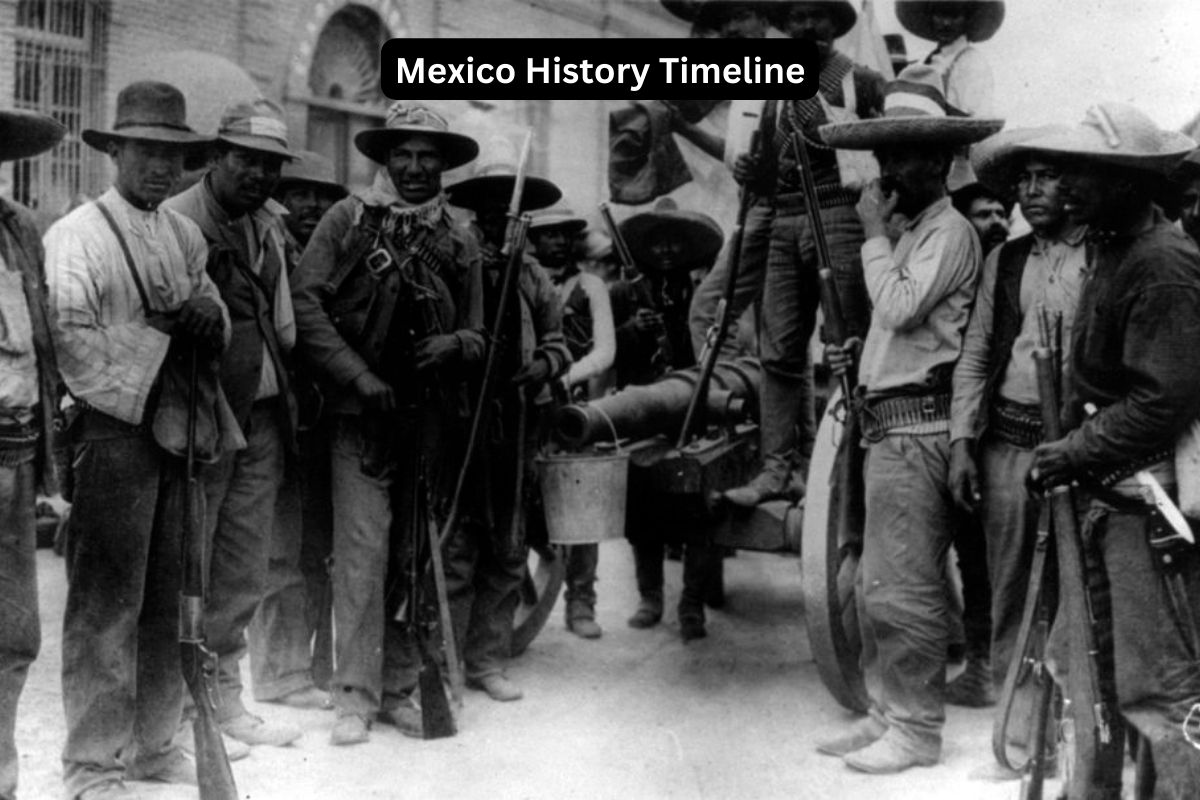Mexico’s history is a rich tapestry woven with threads of ancient civilizations, colonial conquests, revolutionary upheavals, and modern transformations.
From the magnificent pyramids of the Aztecs to the bustling streets of present-day Mexico City, the nation’s story is a testament to resilience, innovation, and diversity.
This article embarks on a journey through the pivotal moments and significant epochs that have shaped Mexico’s identity, from its pre-Columbian roots to its contemporary challenges.
Delving into the intricate layers of Mexican history unveils not only a chronicle of conquests and conflicts but also a narrative of cultural fusion, social change, and political evolution.
By understanding Mexico’s past, we gain insight into the complexities and contradictions of its present reality, offering a lens through which to envision the country’s future trajectory. Join us as we traverse the landscapes of time and explore the vibrant mosaic of Mexico’s historical legacy.
| Period | Events |
|---|---|
| Pre-Columbian Era | Various indigenous civilizations flourish, including the Olmec, Maya, Zapotec, Toltec, and Aztec civilizations. |
| Spanish Conquest | 1519 – 1521: Hernán Cortés leads the conquest of the Aztec Empire. |
| 1521 – 1821: Mexico becomes a Spanish colony known as New Spain. | |
| Mexican Independence | 1810 – 1821: Mexican War of Independence against Spanish rule. |
| Independent Mexico | 1821: Mexico gains independence from Spain. |
| 1823: Mexico becomes a republic. | |
| Modernization and Reform | Late 19th to early 20th century: Period of modernization under President Porfirio Díaz. |
| 1910 – 1920: Mexican Revolution. | |
| 1917: Promulgation of the Mexican Constitution. | |
| Post-Revolution Period | 1920 – 1940: Consolidation of power by the Institutional Revolutionary Party (PRI). |
| 1938: Nationalization of the oil industry. | |
| Contemporary Mexico | 2000: Vicente Fox becomes the first non-PRI president in over 70 years. |
| 2006: Election of Felipe Calderón; escalation of the drug war. | |
| 2012: Election of Enrique Peña Nieto. | |
| 2018: Election of Andrés Manuel López Obrador (AMLO). |
Timeline of the History of Mexico
Pre-Columbian Era:
This era encompasses the time before the arrival of Christopher Columbus to the Americas in 1492. Mexico, during this period, was home to several advanced civilizations.
The Olmec civilization, considered one of the earliest major civilizations in Mesoamerica, flourished from around 1500 BCE to 400 BCE. They are known for their monumental stone heads and early developments in agriculture and writing.

The Maya civilization, which thrived from about 2000 BCE to the 16th century CE, inhabited the Yucatán Peninsula and parts of modern-day Mexico, Guatemala, Belize, Honduras, and El Salvador. They were renowned for their achievements in mathematics, astronomy, architecture, and hieroglyphic writing.
Also Read: Timeline of the Mexican War of Independence
The Aztec Empire, also known as the Mexica Empire, dominated central Mexico from the 14th to the 16th centuries. They established their capital city, Tenochtitlan, on an island in Lake Texcoco (present-day Mexico City).
The Aztecs developed a sophisticated society with a complex social structure, extensive trade networks, and monumental architecture. However, their empire was conquered by the Spanish in the early 16th century.
Spanish Conquest and Colonial Period:
The Spanish conquest of Mexico began in 1519 when Hernán Cortés landed on the Yucatán Peninsula. Cortés and his small army of conquistadors, along with indigenous allies who opposed Aztec rule, embarked on a campaign to conquer the Aztec Empire.
In 1521, after a series of battles and alliances, including the infamous Siege of Tenochtitlan, the Aztec capital fell to the Spanish forces, marking the end of Aztec rule and the beginning of Spanish colonization.

Mexico, known as New Spain, became a vital colony of the Spanish Empire, supplying it with vast quantities of silver, gold, and other resources. Spanish colonizers imposed their culture, religion (Catholicism), and institutions on the indigenous populations.
Also Read: Facts About Mexico’s Government
The colonial period was characterized by a rigid social hierarchy, with Spanish-born individuals (peninsulares) at the top, followed by criollos (those of Spanish descent born in the Americas), mestizos (people of mixed Spanish and indigenous heritage), indigenous peoples, and African slaves.
Mexican Independence:
The seeds of Mexican independence were sown by a combination of internal discontent, enlightenment ideals, and external events such as the American and French Revolutions.
On September 16, 1810, Miguel Hidalgo, a Catholic priest, issued the Grito de Dolores (Cry of Dolores), calling for rebellion against Spanish colonial rule. This event marked the beginning of the Mexican War of Independence.
The war lasted for over a decade and involved various leaders and factions, including José María Morelos and Vicente Guerrero. It was characterized by both military conflicts and political negotiations.

The movement for independence gained momentum, culminating in the Plan of Iguala in 1821, which called for Mexico to become an independent constitutional monarchy under Agustín de Iturbide. This plan led to the end of Spanish rule and the establishment of the First Mexican Empire.
However, Iturbide’s reign was short-lived, and Mexico soon became a republic in 1823, adopting its first federal constitution.
Modernization and Reform:
The late 19th to early 20th century in Mexico was marked by efforts to modernize the country’s economy and infrastructure. President Porfirio Díaz, who came to power in 1876, initiated a period known as the Porfiriato.
Díaz’s regime implemented various modernization projects, including the expansion of railroads, telegraph lines, and infrastructure development. Foreign investment, particularly from the United States and Europe, played a significant role in Mexico’s economic growth during this period.
Also Read: The Mexican-American War
However, the benefits of modernization were unevenly distributed, leading to widespread social inequality and political repression. Díaz’s regime favored the elite and foreign interests, while the majority of the population, including peasants and indigenous communities, experienced exploitation and marginalization.
Opposition to Díaz’s authoritarian rule grew, eventually leading to the outbreak of the Mexican Revolution in 1910. The revolution aimed to overthrow Díaz’s regime, address social injustices, and establish a more democratic and equitable society.

Post-Revolution Period:
The Mexican Revolution, which lasted from 1910 to 1920, resulted in significant political, social, and economic changes in Mexico. It was a complex and multifaceted conflict involving various factions, including agrarian rebels, urban workers, indigenous groups, and regional leaders.
The revolution led to the promulgation of the Mexican Constitution of 1917, which enshrined principles of land reform, labor rights, and social justice. It also established a framework for a more democratic political system and laid the foundation for Mexico’s modern governance.
Following the revolution, the Institutional Revolutionary Party (PRI) emerged as the dominant political force in Mexico. The PRI would govern the country for much of the 20th century, implementing policies of state-led development, social welfare programs, and political stability.
The post-revolution period also witnessed significant social and cultural movements, including the muralist art movement led by figures like Diego Rivera, José Clemente Orozco, and David Alfaro Siqueiros.
Contemporary Mexico:
The latter half of the 20th century and the early 21st century in Mexico have been characterized by political, economic, and social changes. The PRI’s long-standing hegemony began to erode in the late 20th century, leading to increased political competition and the rise of opposition parties.
Economic challenges, including debt crises and structural adjustments, prompted neoliberal reforms in the 1980s and 1990s, aimed at liberalizing the economy, attracting foreign investment, and promoting export-oriented growth.
The implementation of the North American Free Trade Agreement (NAFTA) in 1994 further integrated Mexico’s economy with those of the United States and Canada, leading to both opportunities and challenges for Mexican industries and workers.
In the realm of politics, Mexico has experienced alternating periods of governance under different political parties, including the National Action Party (PAN) and the Party of the Democratic Revolution (PRD), alongside the continued influence of the PRI.
Issues such as corruption, crime, drug trafficking, poverty, and inequality remain significant challenges for contemporary Mexico, while efforts to address these challenges continue through various reforms, social programs, and civil society initiatives.
